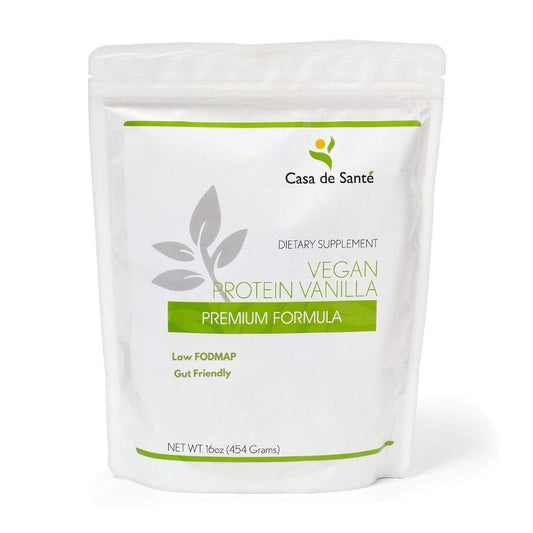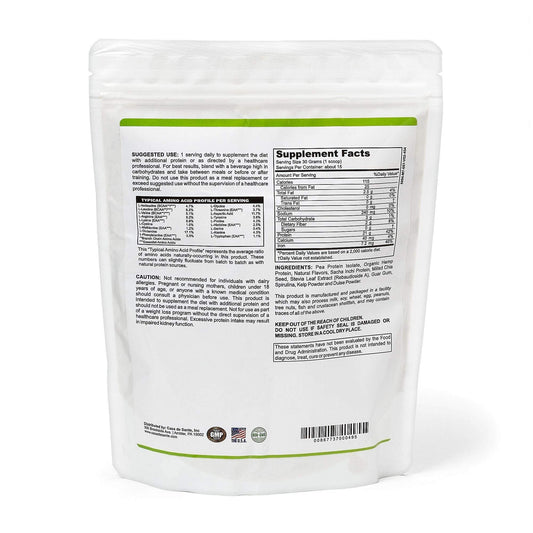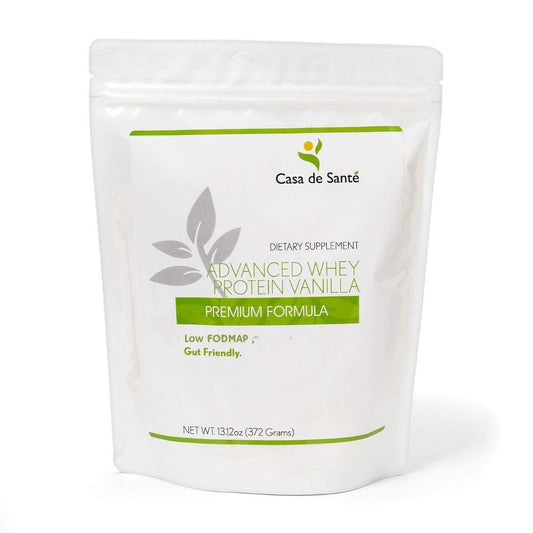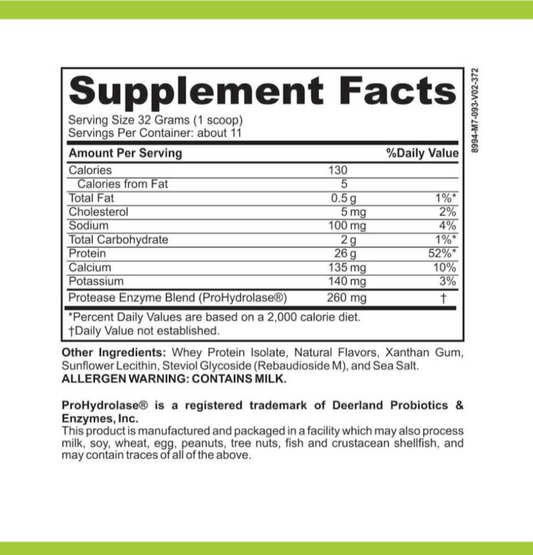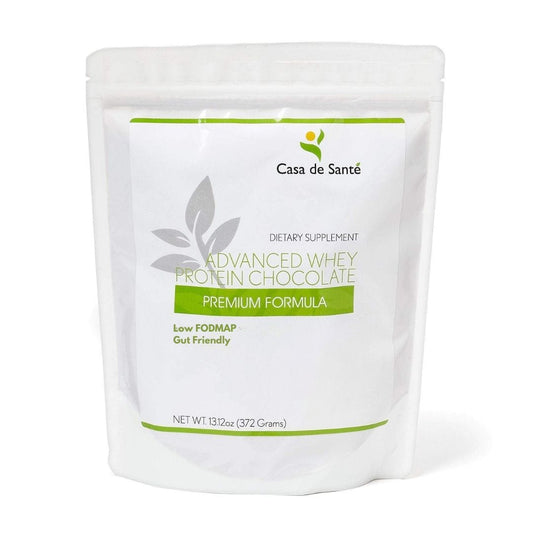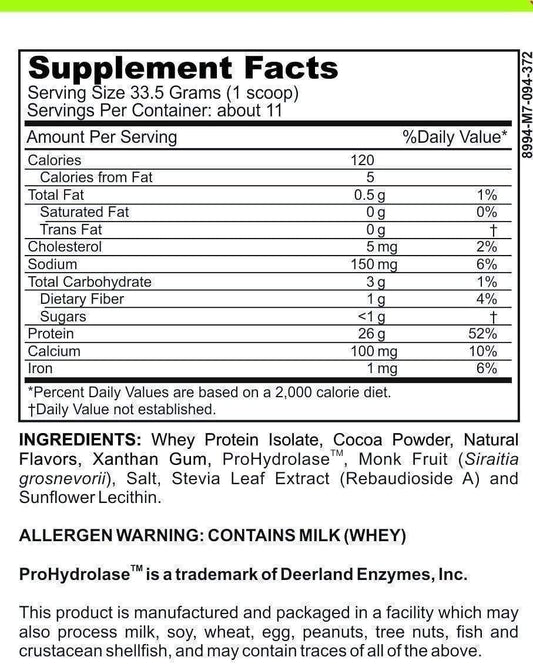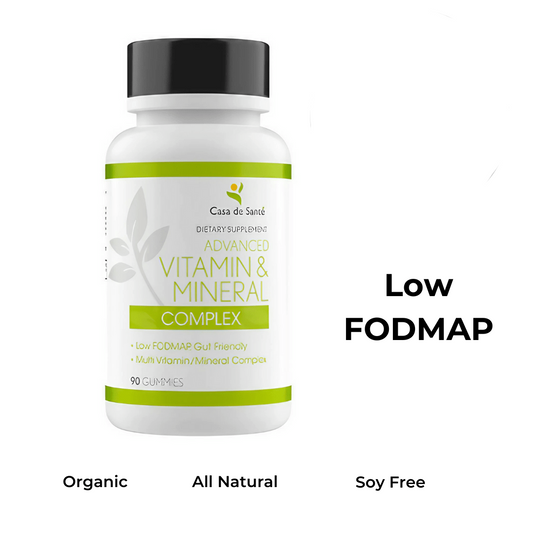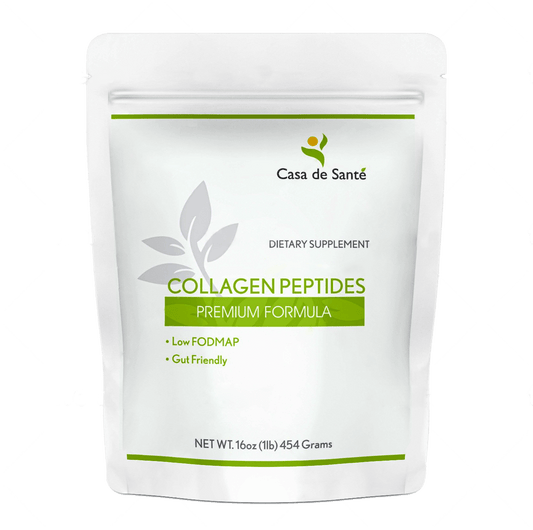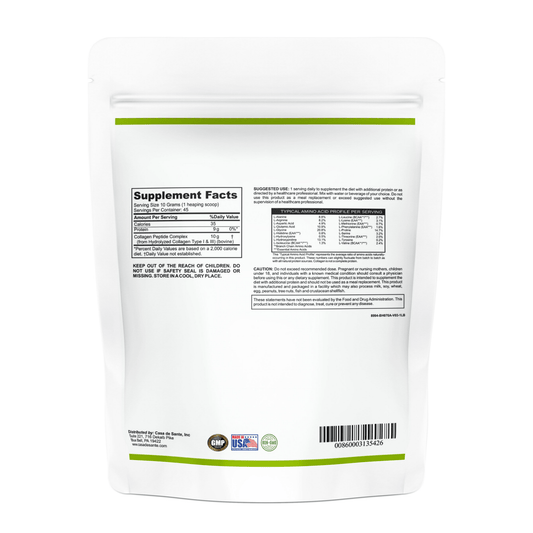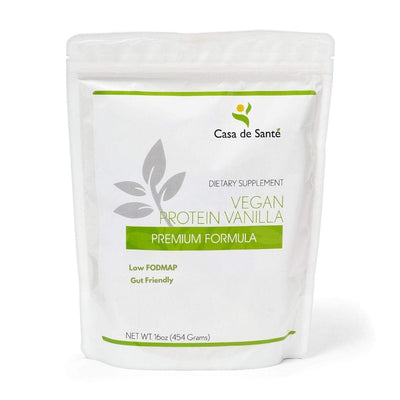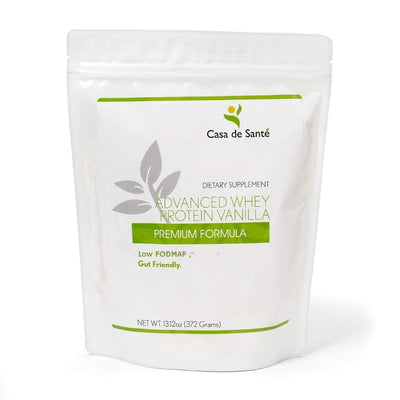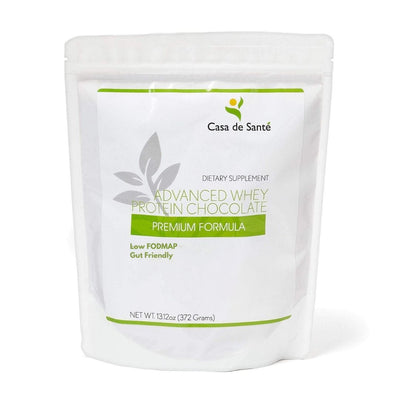Low FODMAP Smoothie Bowl: Expert Tips for a Delicious, Low-FODMAP Delight
Low FODMAP Smoothie Bowl: Expert Tips for a Delicious, Low-FODMAP Delight
Smoothie bowls have become a popular breakfast choice due to their delicious taste, impressive presentation, and nutritious ingredients. While they may be packed with healthy components, many ingredients in typical smoothie bowls can cause digestive discomfort and symptoms in those with Irritable Bowel Syndrome (IBS) or sensitivities to certain types of carbohydrates collectively known as FODMAPs (Fermentable Oligosaccharides, Disaccharides, Monosaccharides, and Polyols). This article focuses on a FODMAP friendly smoothie bowl that will both satisfy your taste buds and ease digestion.
Integrating low FODMAP ingredients into your smoothie bowl recipes ensures that your gut remains comfortable and minimizes any IBS-related symptoms. Discovering delicious and nutritious combinations of fruits, vegetables, and other low FODMAP components will open up an array of exciting new smoothie bowl possibilities tailored to your specific dietary needs. The recipes featured in this article will provide guidance on how to create satisfying and gut-friendly FODMAP smoothie bowls that you can enjoy without worry.
Understanding FODMAP and IBS
If you're dealing with irritable bowel syndrome (IBS), integrating a low FODMAP diet into your lifestyle can significantly alleviate your symptoms. FODMAP stands for fermentable oligosaccharides, disaccharides, monosaccharides, and polyols. These are short-chain carbohydrates that your small intestine may not absorb well, causing digestive distress such as cramping, diarrhea, constipation, stomach bloating, gas, and flatulence.
A low-FODMAP diet aims to eliminate or reduce your intake of these poorly absorbed carbohydrates, which can help manage your IBS symptoms. It is essential to consult with your healthcare provider before starting a low-FODMAP diet to ensure it is suitable for your specific needs.
When creating a low-FODMAP smoothie bowl, you should:
- Use only low-FODMAP fruits and vegetables, such as strawberries, blueberries, spinach, and kale.
- Avoid high-FODMAP ingredients like soy and rice milk.
- Opt for belly-friendly non-dairy milk alternatives such as almond milk, coconut milk (limit 1/2 cup), hemp milk or oat milk (limit 1/8 cup).
Keep in mind that FODMAP stacking can occur when mixing various fruits and vegetables in your smoothie bowl. Even though individual portions of specific ingredients may be classified as low-FODMAP, combining them in large quantities can result in a high overall FODMAP content. To prevent this, pay close attention to portions and avoid using too many high-FODMAP ingredients in your smoothie bowl.
By understanding the connection between FODMAP and IBS, you can create a delicious and nutritious smoothie bowl that supports your digestive health and helps manage your IBS symptoms.
The Importance of a Healthy Breakfast
A healthy breakfast is essential for starting your day off right. As you embark on your journey to a low FODMAP diet, incorporating nutritious and balanced meals into your morning routine can set the tone for the rest of your day. When you prioritize a healthy breakfast, you provide your body with the essential nutrients it needs to function optimally.
By consuming a nutritious breakfast, you'll notice that your energy levels are more consistent throughout the day. This is because your blood sugar levels remain stable, helping you avoid the mid-morning crash that leaves you feeling sluggish and tired. Additionally, a balanced meal in the morning can contribute to better focus and improved productivity.
In your low FODMAP diet, it's important to include a variety of nutrient-rich foods, such as fruits, vegetables, proteins, and whole grains. When creating your FODMAP-friendly smoothie bowl, consider incorporating the following ingredients:
- Low FODMAP fruits: such as bananas, strawberries, or blueberries
- Low FODMAP vegetables: like spinach or kale
- Liquids: opt for low FODMAP milk, plant-based milk with no added FODMAP, or water
- Protein source: try using nut butter, lactose-free yogurt, or firm tofu
Remember to be mindful of FODMAP stacking when making your smoothie bowl. This means that you should pay attention to the portions of fruits and vegetables to ensure they remain low FODMAP. Don't forget to add some optional ingredients for extra flavor, such as vanilla essence or maple syrup.
In conclusion, a healthy breakfast is crucial for maintaining overall wellbeing and sustaining energy levels throughout the day. By incorporating a nutritious and well-balanced low FODMAP smoothie bowl into your morning routine, you can set yourself up for success and support your journey towards better digestive health.
Choosing Low FODMAP Ingredients
When creating a low FODMAP smoothie bowl, it's crucial to select the right ingredients to help maintain a healthy gut. Here are some tips for choosing suitable components for your smoothie bowl:
First, consider using low FODMAP fruits and vegetables. Examples of low FODMAP fruits include unripe bananas, kiwi, blueberries, strawberries, and raspberries. For vegetables, spinach and kale are excellent choices, especially for green smoothies. Keep in mind that servings should still be portioned according to the recommended low FODMAP serving sizes to avoid FODMAP stacking.
Next, let's talk about milk alternatives. Almond milk and lactose-free milk make great choices for your smoothie as they are both low in FODMAPs. Remember to check the labels and opt for unsweetened versions to minimize added sugars.
For extra oomph and a richer texture, you can include protein powder or nut butter in your smoothie bowl. Choose a low FODMAP protein powder, such as rice protein or pea protein, and consider unsweetened or vanilla-flavored options. Nut butter, like peanut or almond, can be used, but remember to watch your portion sizes to avoid FODMAP stacking.
Incorporating seeds into your smoothie bowl can provide texture and additional nutrients. Good options include chia seeds, flax seeds, and sunflower seeds. Again, be mindful of the serving size to maintain low FODMAP content.
Finally, let's discuss toppings. FODMAP-friendly toppings can enhance the flavor and appearance of your smoothie bowl. Consider adding sliced strawberries, blueberries, raspberries, almonds, or coconut flakes. For an extra touch of sweetness, feel free to include a sprinkle of cinnamon or a drizzle of pure maple syrup. If you're a fan of granola, opt for a low FODMAP granola to use as a topping.
In summary, when creating a low FODMAP smoothie bowl, carefully select the right mix of fruits, vegetables, milk alternatives, protein sources, seeds, and toppings. By adhering to recommended serving sizes and considering the various low FODMAP ingredients available, you'll be able to create a satisfying and gut-friendly meal that's perfect for any time of the day.
The Role of Non-Dairy Milk in Smoothies
When creating a FODMAP-friendly smoothie bowl, it's essential to consider the type of milk you use. Non-dairy milks, such as almond milk and lactose-free milk, can be a suitable alternative to regular dairy milk for individuals who are lactose intolerant or following a low FODMAP diet.
Almond milk is a popular choice in smoothie bowls due to its light, nutty flavor, and smooth texture. Opting for unsweetened almond milk ensures that you're avoiding any added sugar, which can contribute to IBS symptoms. Almond milk provides essential nutrients such as calcium and vitamin E, making it a healthy addition to your low FODMAP smoothie bowl.
Lactose-free milk is another option for those who are lactose intolerant. This type of milk undergoes a process where lactose is broken down, making it more easily digestible for those with lactose sensitivities. Lactose-free milk still retains the creamy texture and taste of regular milk, providing protein, calcium, and vitamin D in your smoothie bowl.
When preparing your smoothie bowl, consider the following non-dairy milk options:
- Unsweetened almond milk
- Lactose-free milk
Remember to select the appropriate milk based on your dietary needs and taste preferences. Ensuring the milk you incorporate into your smoothie bowl is low FODMAP will contribute to a delicious and gut-friendly meal that you can enjoy without worry.
Benefits of Protein Rich Ingredients
Eating a protein-rich diet has numerous health benefits, and incorporating protein-rich ingredients in your low FODMAP smoothie bowls can help fuel your body and support various bodily functions. Protein is essential for building and repairing muscles, producing hormones, and maintaining healthy hair and nails.
When making a low FODMAP smoothie bowl, you can add various ingredients high in protein, such as:
- Low FODMAP protein powder: There are several protein powders available that are suitable for a low FODMAP diet. They can be derived from sources like brown rice, hemp, or pea protein. Adding a scoop of low FODMAP protein powder to your smoothie bowl gives it an extra protein boost without triggering digestive discomfort.
- Chia seeds: These tiny seeds are packed with fiber and protein. They also add a subtle crunch to your smoothie bowl while helping you feel fuller for a longer time. Just make sure to limit your portion to 2 tablespoons per serving to keep it FODMAP-friendly.
- Hemp hearts: They are another excellent plant-based protein source. You can sprinkle a tablespoon or two on your smoothie bowl for a burst of protein and healthy fats, without the worry of excess FODMAPs.
Including protein-rich ingredients in your low FODMAP smoothie bowls not only helps you meet your daily protein requirements but also adds texture and flavor to your meal. As you experiment with various ingredients, keep in mind the portion sizes to avoid FODMAP stacking and maintain a balanced, nutritious, and delicious smoothie bowl.
Delicious Toppings for Fodmap Smoothie Bowl
Creating a tasty and satisfying FODMAP smoothie bowl is all about choosing the right toppings. You can add various toppings to your smoothie bowl to enhance the flavor and provide additional nutrients, while still adhering to FODMAP guidelines. Here are some delicious toppings for your FODMAP smoothie bowl:
Seeds and Nuts: Including seeds and nuts in your smoothie bowl offers a satisfying crunch, as well as added fiber and healthy fats. Some FODMAP-friendly choices are:
- Chia seeds (up to 2 tbsp)
- Flaxseeds (up to 1 tbsp)
- Walnuts (up to 10 halves)
- Macadamia nuts (up to 20 nuts)
Granola: Opt for a low FODMAP granola to enhance the texture of your smoothie bowl. Be mindful of the ingredients, and avoid those containing high FODMAP ingredients, such as honey or inulin. You can also find grain-free versions for added variety.
Coconut Flakes: Coconut flakes provide a tropical and sweet touch to your smoothie bowl. Choose unsweetened coconut flakes for a low FODMAP option, and use up to ¼ cup as a topping.
Cacao Powder: For a rich and chocolatey flavor, sprinkle a teaspoon of unsweetened cacao powder over your smoothie bowl. It adds depth and a touch of bitterness that balances out the natural sweetness of the fruits.
Fruits: Adding fresh, sliced fruit to your smoothie bowl brings vibrant color and extra flavor. Some low FODMAP options include:
- Sliced strawberries (up to 5 medium-sized berries)
- Blueberries (up to 1/4 cup)
- Raspberries (up to 30 berries)
- Pineapple (up to 1 cup)
Chocolate and Peanut Butter: For those craving an indulgent smoothie bowl, drizzling a small amount of melted dark chocolate (preferably above 70% cacao) and a teaspoon of natural peanut butter over your bowl can satisfy your sweet tooth while remaining FODMAP-friendly.
Remember, while individual portions of these toppings are considered low FODMAP, be mindful of FODMAP stacking, and don’t go overboard with your toppings. By carefully selecting your ingredients, you can create a mouthwatering FODMAP smoothie bowl that is both delicious and nutritious.
Preparing the Perfect Smoothie Bowl
To prepare a delicious and nutritious low FODMAP smoothie bowl, gather your ingredients and have a high-quality blender handy. In a typical smoothie bowl, you will need a combination of fruits, vegetables, and a base like lactose-free milk or yogurt. The key is to select low FODMAP fruits and veggies to ensure digestive comfort.
To begin, choose your fruit or vegetable ingredients. You can mix a ripe banana along with 1/2 cup of raspberries or blend diced honeydew melon and kiwi. Remember to stay within the recommended serving sizes of low FODMAP fruits to avoid excess carbohydrates.
Next, add a base to your blender. This can be lactose-free milk, yogurt, or even a low FODMAP protein powder. To add creaminess and thickness to your smoothie bowl, consider using a few ice cubes or frozen fruit.
For added nutrition and variety, feel free to include some low FODMAP nuts, seeds, or even a handful of granola. Chia seeds, flaxseeds, and walnuts are all great options. However, be mindful of the portion sizes and do not exceed the recommended servings.
Once you have all your ingredients inside the blender, pulse until you achieve a smooth, creamy consistency. Take your time and scrape down the sides of the blender with a spatula if necessary to ensure all ingredients are well-blended.
Finally, pour the smoothie mixture into a bowl and get creative with your toppings. Sprinkle granola, fresh fruit, or a dusting of blueberry powder for additional flavor and texture.
By following these steps, you can create a satisfying low FODMAP smoothie bowl that supports digestive health and keeps your taste buds happy. Try experimenting with different ingredients, ensuring that you keep the FODMAP levels in check, and have fun in the process of discovering your favorite combinations.
Favorite Low FODMAP Smoothie Bowl Recipes
Starting your day with a delicious and healthy breakfast is important, especially when you're following a low FODMAP diet. Smoothie bowls can be a great breakfast option that allows you to enjoy a nutritious meal while sticking to your dietary needs. Here are a few favorite low FODMAP smoothie bowl recipes for you to try out:
1. Berry Banana Smoothie Bowl
- 1 ¼ cups low-FODMAP milk (for example, almond, lactose-free cow's milk, hemp, or rice milk)
- ½ cup frozen blueberries
- ½ cup frozen strawberries
- 1 ripe banana
- 1 tablespoon chia seeds
- Toppings: blueberries, sliced banana, and gluten-free granola
Blend the milk, frozen berries, and banana until smooth. Pour the mixture into a bowl and add the chia seeds, stirring well to combine. Top with fresh blueberries, banana slices, and gluten-free granola for a tasty and satisfying breakfast.
2. Tropical Smoothie Bowl
- 1 cup chopped pineapple
- 1 cup chopped papaya
- 1 cup low-FODMAP milk (almond, lactose-free cow's milk, hemp, or rice milk)
- ½ cup lactose-free Greek yogurt or coconut yogurt
- 1 tablespoon flaxseed meal
- Toppings: kiwi slices, coconut flakes, and chia seeds
Blend the pineapple, papaya, milk, and yogurt in a blender until smooth. Pour the mixture into a bowl and stir in the flaxseed meal. Top your tropical smoothie bowl with fresh kiwi slices, coconut flakes, and chia seeds for a burst of island-inspired flavor.
3. Green Goodness Smoothie Bowl
- 1 cup spinach
- 1 small ripe banana
- ¼ cup cucumber, chopped
- ¾ cup low-FODMAP milk (almond, lactose-free cow's milk, hemp, or rice milk)
- ½ cup lactose-free Greek yogurt or coconut yogurt
- 1 tablespoon chia seeds
- 1 tablespoon hemp seeds
- Toppings: sliced cucumber, pumpkin seeds, and sliced strawberries
Blend the spinach, banana, cucumber, milk, and yogurt together until smooth. Pour the mixture into a bowl and mix in chia seeds and hemp seeds. Garnish your green smoothie bowl with cucumber slices, pumpkin seeds, and sliced strawberries for a nutrient-packed breakfast.
Enjoy these low FODMAP smoothie bowls for breakfast or a nutritious snack. They are not only tasty but also help you stick to your dietary needs. Have fun experimenting with different ingredients and toppings to create your own delicious and personalized smoothies bowls.
Monash University's Guidelines on FODMAP
Monash University, located in Melbourne, Australia, is at the forefront of FODMAP research. They discovered FODMAPs in 2005 and have since developed the Low FODMAP Diet, which has been proven to reduce symptoms in people with Irritable Bowel Syndrome (IBS).
FODMAPs are short-chain carbohydrates that are either poorly absorbed in the small intestine or impossible to digest. When poorly absorbed, these carbohydrates can trigger IBS symptoms. Following a low FODMAP diet can help you alleviate or manage these symptoms.
To support your low FODMAP diet, Monash University has created resources such as a FODMAP smartphone app, which provides you with an extensive food database and information on how to follow the Low FODMAP Diet. This app can be a handy tool to guide you on managing your IBS symptoms.
In addition to the app, Monash University has also developed various low FODMAP recipes, including smoothie bowl recipes like the Cacao Peanut Butter Smoothie Bowl. This nutritious bowl is made with low FODMAP ingredients such as bananas, peanuts, strawberries, and chia seeds. You can try making this smoothie bowl by blending all the ingredients in a blender and serving it immediately.
Remember, when following a low FODMAP diet, it's essential to consider FODMAP stacking. This is when multiple servings of low FODMAP foods are consumed in one meal, potentially causing a buildup of FODMAPs and triggering IBS symptoms. To avoid this, try to keep track of the low FODMAP servings in your meals and maintain a balance.
In summary, by following the guidelines and resources provided by Monash University, you can effectively manage your IBS symptoms through a low FODMAP diet and enjoy delicious recipes like smoothie bowls.
The Health Benefits of a Balanced Diet
A well-rounded diet can bring about numerous health benefits, which is why it's important to incorporate a variety of nutritious ingredients into your FODMAP smoothie bowl. In this section, we'll discuss how a balanced diet contributes to your overall well-being.
Eating a healthy, balanced diet can provide your body with essential nutrients, which are necessary for maintaining good health, preventing diseases, and functioning optimally. By including a diverse array of plant-based ingredients in your diet, you offer your body a rich source of vitamins, minerals, and antioxidants. Many dietitians recommend that incorporating whole foods, such as fruits and vegetables, is vital for your nutrition needs.
One key component of a balanced diet is fiber, which can be found in different varieties of fruits and vegetables. Fiber is essential for supporting your digestive system and promoting regular bowel movements, which in turn helps reduce the risk of diseases, such as certain types of cancer. Moreover, fiber-rich foods help to manage your weight by making you feel fuller for longer periods.
Including healthy fats in your diet, such as those found in avocados and nuts, not only adds flavor to your FODMAP smoothie bowl but is also crucial for better brain function, reduced inflammation, and increased heart health. Don't be afraid to include fat in your diet, but be mindful to choose healthy sources and consume them in moderation.
If you opt for a vegan or plant-based diet, you can still receive all the necessary nutrients your body requires. Plant-based diets have been linked to a lower risk of chronic diseases, such as obesity, heart disease, and type 2 diabetes. Furthermore, these diets might even provide protection against certain types of cancer. Just make sure to consume a variety of plant-based foods for balanced nutrition.
During your trips or on-the-go moments, a FODMAP smoothie bowl can be a convenient way to consume your daily nutrients while maintaining a balanced diet. Always ensure that you include ingredients that cater to your nutritional needs, and don't hesitate to consult a dietitian for personalized guidance.
By following these recommendations, you can enjoy a FODMAP smoothie bowl that not only tastes great but also contributes to a healthier and more balanced lifestyle.

